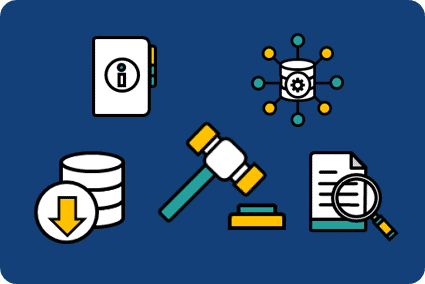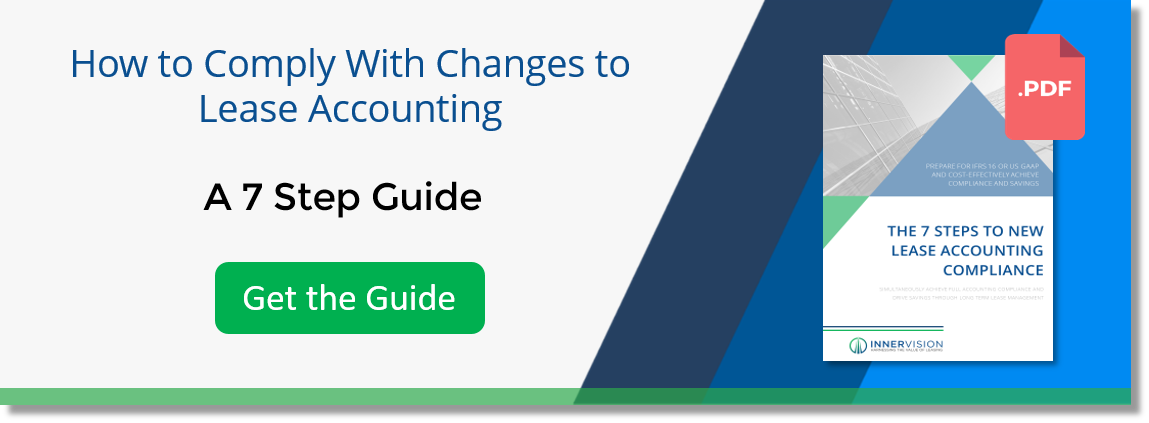What Are The Key Data Capture Points Needed For IFRS 16 Compliance?
Updated 26th May 2021 | 6 min read Published 7th September 2017

Complying with new legislation is always a time sensitive and labour-intensive exercise. Besides learning about what compliance looks like, we also, usually, need to understand where we are coming from.
As in, once it’s understood where we need to be, a time scale and plan can only be agreed once we know what the current state of play is. For Health & Safety compliance, any changes in regulations means conducting a starting audit – how far are we from complying at this point. And for organisation or company mergers, it means learning and appreciating new existing protocols and expectations before business can continue in having the merge bodies complying to revised protocols and expectations.
IFRS 16 compliance is no different.
The trouble is smart businesses have seen how complex achieving compliance will be. Even smarter businesses have already started the process of understanding where they are with regard to compliance as things stand and planning to identify the “gaps”, despite the fact that implementation dates are not yet due.
But, why?
Because the data capturing needed in order to achieve lease accounting compliance in line with the new standards is a timely, difficult exercise. And, furthermore, once the initial data capture is complete and the leases reclassified where and when necessary, it’s an ongoing process to demonstrate continued compliance into the future.
Also, under IFRS 16 lease accounting changes, the need to have a well-managed and optimised lease portfolio will be of increased importance. As the changes will affect cashflow, balance sheets and other key financial metrics, companies will not be able to risk having a soft touch approach to the finances associated with their leased assets. In the wake of IFRS16, leases will be scrutinised more keenly because of the effects they will have on company financials going forward
The Data Capture Points
Pre Transition: Data Gathering
The initial data gathering process is going to be the most time consuming and laborious part of achieving compliance. More so the bigger your business is and wider the points of responsibility and filing are spread.
Even in a single site operation, there are likely to be long since seen lease agreements for age-old, long-life assets. If you use operational assets such as on-site storage containers, you may have one employee who can locate the associated documents and data, but another person entirely will take care of something like the sales team’s company vehicles and mobiles.
Assuming sourcing where this information held is easy enough, gathering it in and collating it is often difficult. This difficulty increases exponentially the wider spread your sites and points of contact are, and the closer you leave it to the implementation deadline.
You will need to capture and gather the following data for lease accounting:
- Respective Lease reference ID details
- Lessor information from all your lease providers
- Contract start dates
- Initial contract end dates
- Unpaid lease rentals – values, periodicity and date schedules from start to end
- Non-lease components included in lease rental payments
- Variable lease payments included in fixed lease payments
- Implicit lease rate
- Internal borrowing rate
- Index rate at commencement of lease agreement
- Asset categories
- Useful life of assets
- Assets rental split per lease
- Date of modifications, if applicable
- Modification rentals – values, periodicity and date schedules from start to end
- Management Information required for internal reporting purposes
- Sub-lease information – head lessor, head finance / head operating lease, rental amounts
- Sale and leaseback – lessee sale, lessor purchase price.
To find out the full list of the mandatory and optional data capture points required to perform the accounting we have created this short eDocument (pdf.) - View Here.
Following this data collection, lessees will have to make decisions on the following:
- Elect to opt out of IFRS 16 for short term and/or low value leases
- Elect to separate lease and non-lease components
And all of this will need to be managed, stored and presented in a way which allows multi-channel reporting and assessment. The resource chosen to conduct all of the above needs to understand leasing as it is today and compliance as it will be tomorrow.
In many instances, leading companies are streamlining this process by turning to lease accounting software that allows them to not only consolidate their lease data on one secure data repository but also allows for simplified compliance through the use of intelligent automated reports that run the complex accounting calculations with ease.
Post Transition: Data Managing and Monitoring
Once the initial transition phase is over and your entity is operating under the new regulations as a matter of course, it will be of constant importance to manage and monitor all your lease data properly.
The new standards have taken over a decade to finalise and will be effective for the foreseeable future. These changes mean that your key financial metrics which are impacted by the changes in lease accounting will continue to be pressured by your lease portfolio.
The trend for the past few years has been for the use of lease agreements to continue to become more and more popular. The financial benefits and flexibility offered are huge for lessees.
Businesses have been able to benefit from an upturn in demand for leases resulting in lease providers having to offer ever more competitive terms.
As time passes and the lease accounting changes come into effect, we may experience a plateau where financial considerations of the effect of a large lease portfolio are more prominent.
Close management of your lease agreements, in terms of financial performance and efficiency, will, therefore, be of heightened importance.
You will have gathered all of the information to be compliant but a positive spin off is that you now have everything you need to have your business sensibly, economically and prudently manage leases and leasing going forward – there can be real financial savings and reward if you make the right investment at the data gathering stage.
What To Do Next
Good planning and proper involvement of all the relevant parties is essential. In order to remain efficient, it’s advised that you appoint only a small team to be held accountable for gathering all of the lease data needed for IFRS 16 compliance. However, this small team or the individual will need input from various areas of the business.
This team or individual will need to be in contact with: accounts and treasury, estate or property management, operations, procurement, IT, the Board and any interested investors. Additionally, they may well need to contact, converse, and negotiate with the owners of the assets and the lessors to be sure of understanding the full commitments and liabilities.
Once the data is gathered it needs collating on an accessible system in order to allow the business to assess the impact of compliance.
Also, your business will need to decide which exemptions you’re eligible for and which transition reliefs can be taken advantage of. Or if it’s financially practical to do so, because the more time and attention your chosen team spends on achieving compliance, the more other areas of their regular responsibilities will suffer.
Before all of this, however, it’s advisable to carry on getting a full and clear picture of what compliance with IFRS 16 entails. This has been a quick overview but there are other intricacies to consider and you may need some more tangible and in-depth tips and advice.
We have put together a 7-step document to reaching compliance and you can open it for free below.


